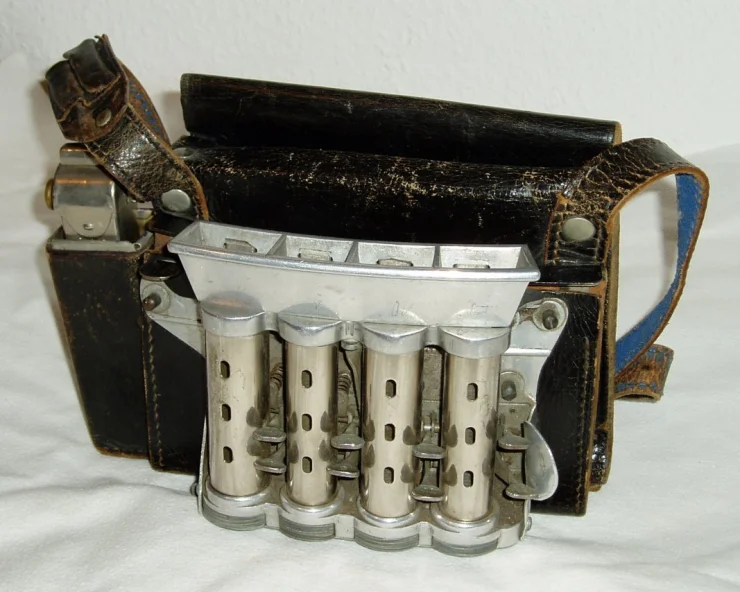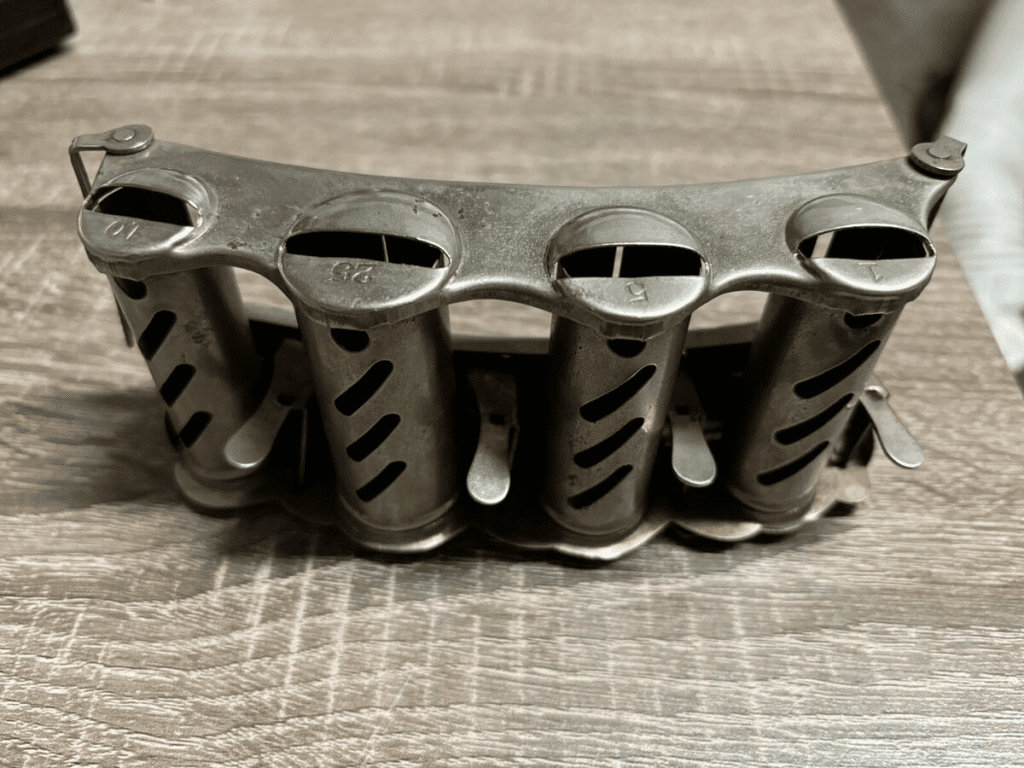If you’ve ever watched an old movie or a newsreel from the early to mid-20th century, you may have spotted a bus conductor, train ticket seller, or street vendor with a peculiar gadget strapped to their belt. This handy device was known as a belt change dispenser, a tool that simplified the task of dispensing coins for small transactions. Once essential to numerous professions, these change dispensers have now become charming relics of a time gone by. So, what made these gadgets so popular, and why did they disappear from daily life?
A Brief History: The Invention and Rise of Belt Change Dispensers

Belt change dispensers first gained traction in the early 20th century as a practical solution for individuals handling cash transactions on the go. Invented by Jacques L. Galef in the 1920s, this device filled a specific need in a cash-centric society.
Picture a street vendor or bus conductor during the 1930s, faced with dozens of customers each day. Efficiency was key, and the belt change dispenser provided a fast, accurate way to manage small transactions. Not only did the dispenser save precious seconds with each sale, but it also reduced the risk of human error, an invaluable benefit in the days before digital registers and calculators.
How Belt Change Dispensers Worked: Ingenious Simplicity in Design
The genius of the belt change dispenser lies in its simplicity. Typically worn around the waist, each dispenser featured multiple spring-loaded barrels, each containing a different coin denomination—pennies, nickels, dimes, and quarters. Here’s how it worked:
- Coin Release Mechanism: Each barrel was connected to a lever. When the lever was pressed, a spring-loaded gate would open at the bottom, releasing a single coin.
- Quick Refill: When a barrel ran low, the user simply opened the top clasp and added a fresh roll of coins. Each barrel generally held about one roll of coins, which was more than sufficient for a busy work shift.
- Mechanical Simplicity: No electricity or batteries were required. This straightforward mechanical system allowed for durability and reliability, making it perfect for a variety of professions.
In an era when efficiency and accuracy were vital, belt change dispensers allowed for a faster, more streamlined transaction process, cutting down the time spent counting coins by hand.
Who Used Belt Change Dispensers? The Many Professions That Relied on Them
While belt change dispensers became common among a wide array of workers, there were a few professions where they were particularly indispensable:
Public Transportation Workers
Bus and train conductors were among the primary users of belt change dispensers. As they collected fares from passengers, the quick and precise coin dispensing mechanism allowed them to maintain efficient boarding processes, ensuring passengers could pay and take their seats swiftly.
Street Vendors
Street vendors selling everything from newspapers to ice cream relied heavily on these dispensers. They could operate without a cumbersome cash register and easily dispense change to customers as they made their sales on the go.
Ticket Sellers
Ticket booths at movie theaters, carnivals, and sporting events often utilized belt change dispensers. These vendors could handle a high volume of small transactions without ever leaving their station, enhancing the customer experience and ensuring a smooth flow of sales.
Parking Attendants
Before the days of parking meters, attendants frequently used change dispensers to provide quick change for drivers. With a dispenser strapped to their belt, attendants could complete transactions efficiently, reducing wait times for drivers.
In these roles, belt change dispensers became synonymous with speed and efficiency, as workers could quickly provide exact change with minimal effort.
Why Belt Change Dispensers Faded Away: The Decline of a Once-Essential Tool

As the decades passed, the way we handle money changed significantly, and belt change dispensers began to lose their place in everyday commerce. Here are a few key reasons for their decline:
The Advent of Digital Cash Registers
By the 1970s, digital cash registers had become commonplace in many retail settings, offering a way to quickly calculate and dispense change. These machines made it unnecessary for workers to carry coins on their person, as change could now be handled by automated cash drawers.
The Rise of Card Payments
As credit and debit cards grew in popularity, the demand for small coins dwindled. With fewer customers relying on cash, the need for coin-dispensing tools like belt change dispensers decreased dramatically, making them redundant in an increasingly cashless society.
Self-Service Machines and Automation
Automated vending machines and ticket kiosks began replacing human attendants for small transactions. These machines could handle payments directly, eliminating the need for workers to carry and dispense change manually.
Modern Payment Solutions
In recent years, portable POS systems and mobile payment solutions have rendered cash transactions even less common. With digital payment options at our fingertips, the efficiency provided by a belt change dispenser has become a relic of the past.
Where Are Belt Change Dispensers Today? Nostalgic Collectibles and Vintage Appeal

Today, belt change dispensers have found a new life as vintage collectibles. Enthusiasts of retro gadgets appreciate these devices for their historical significance and the nostalgia they evoke. Whether found at an antique store, flea market, or online marketplace, a belt change dispenser is a sought-after item for collectors who appreciate the ingenuity of past technologies.
For many, these gadgets aren’t just relics—they’re reminders of an era when handling cash was a personal, manual experience. Each dispenser tells a story of the hard-working individuals who relied on them, from conductors to street vendors, who needed every advantage to keep transactions flowing smoothly.
Conclusion: The Legacy of Belt Change Dispensers in a Digital World
Belt change dispensers represent a unique chapter in the history of cash handling. Once essential for a variety of professions, these simple yet effective tools offered a fast, reliable way to handle small transactions. Though they may seem quaint by today’s standards, they’re a reminder of a time when handling money was a tactile experience.
As we move further into a digital world, looking back on gadgets like the belt change dispenser helps us appreciate the progress we’ve made—and remember the simpler systems that served us so well. Whether seen as nostalgic keepsakes or functional pieces of history, these change dispensers continue to fascinate and remind us of a bygone era when coins ruled and speed mattered.
So, the next time you spot a belt change dispenser at a vintage fair or in a classic film, take a moment to appreciate its legacy. It’s not just a gadget; it’s a symbol of how people adapted technology to meet the demands of everyday life—long before the advent of smartphones and digital wallets.


